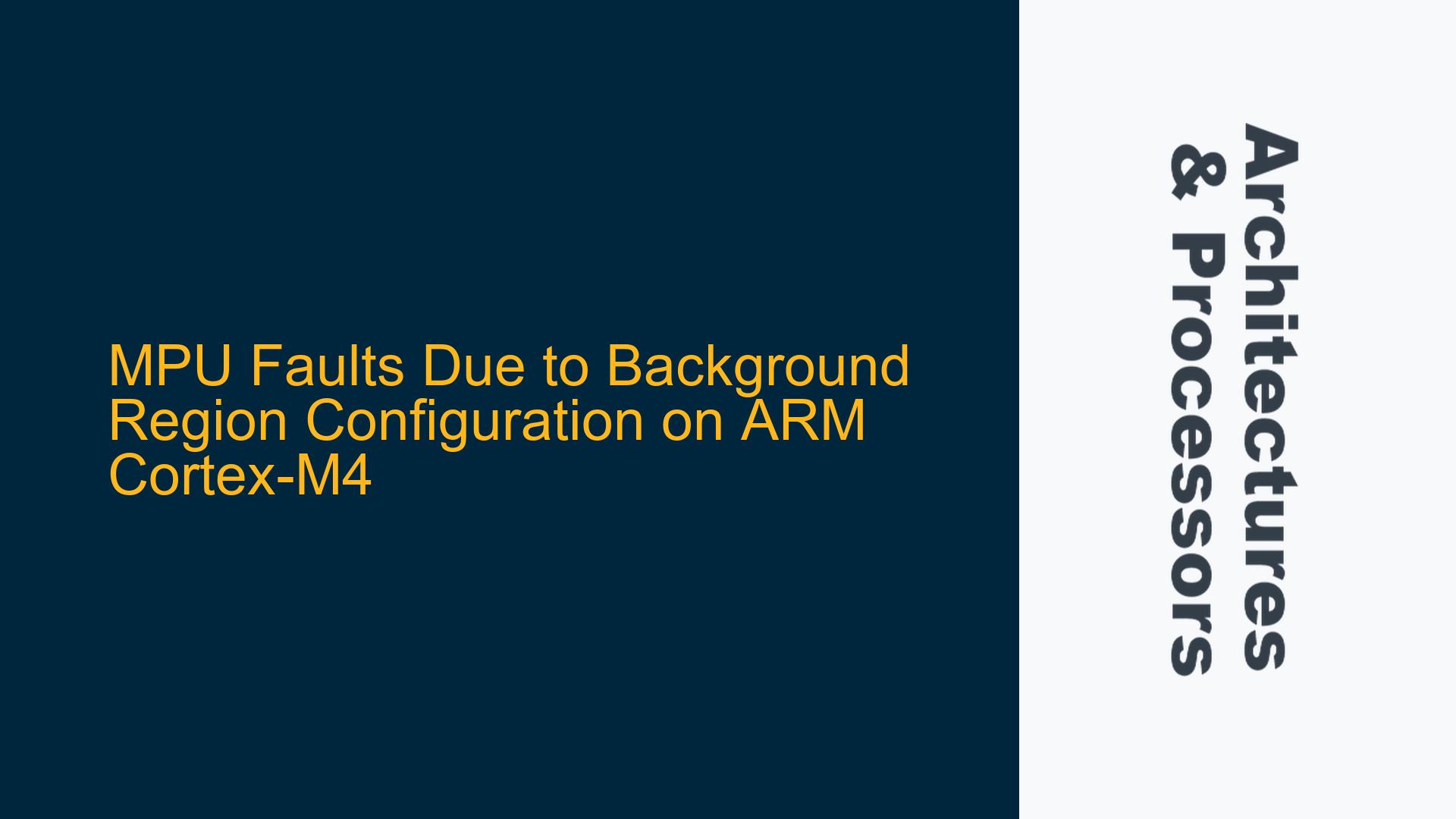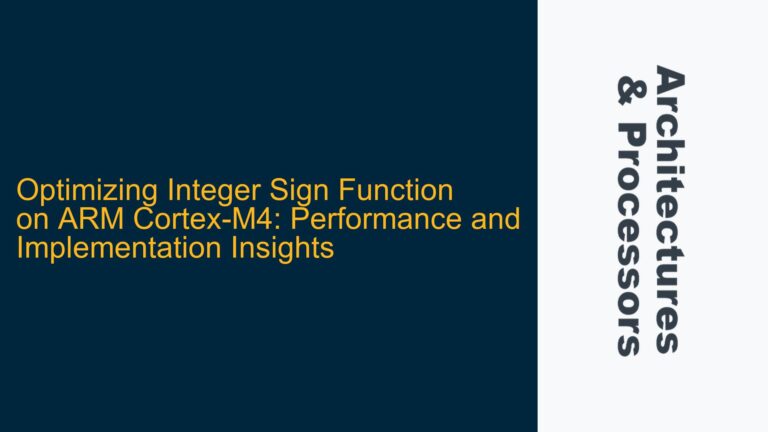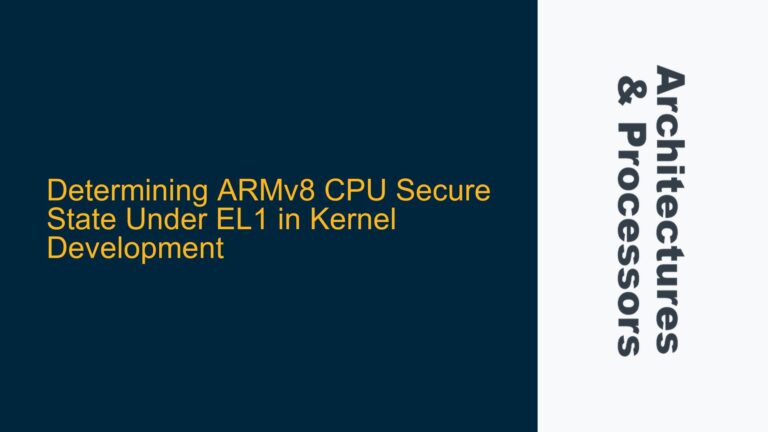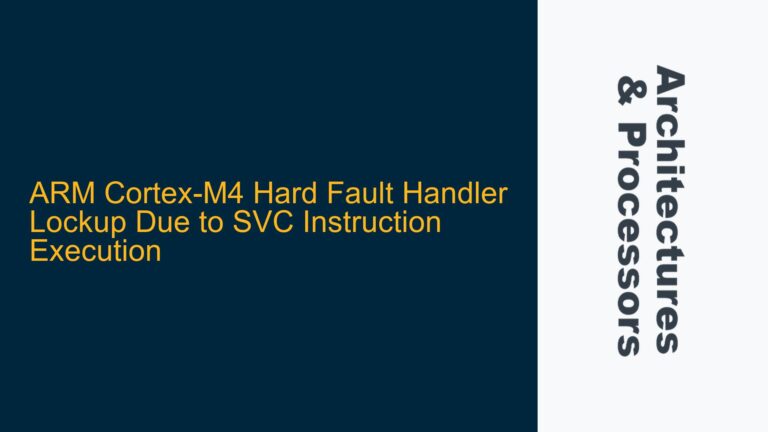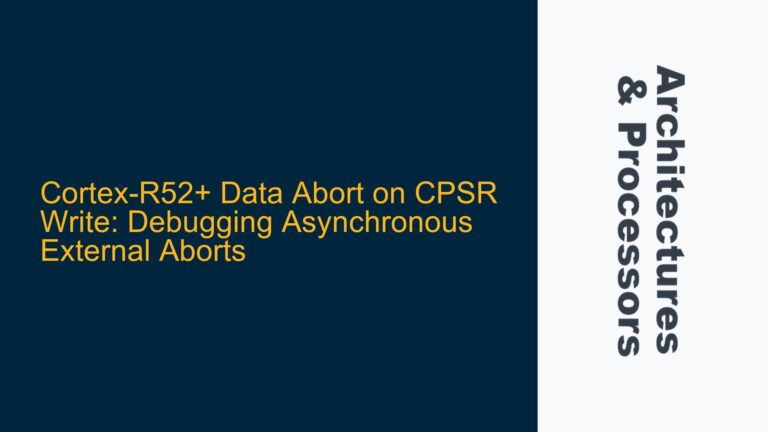MPU Background Region Configuration and Fault Generation on STM32F427
The ARM Cortex-M4 Memory Protection Unit (MPU) is a critical component for ensuring memory safety and access control in embedded systems. When configured correctly, the MPU can prevent unauthorized access to memory regions, thereby enhancing system reliability. However, improper configuration of the MPU, particularly the background region, can lead to unexpected faults. In the case of the STM32F427 microcontroller, enabling the background region protection results in an MPU fault, even though individual memory regions are configured correctly. This issue stems from the interaction between the background region settings and the default memory map of the Cortex-M4 architecture.
The background region is a special MPU feature that provides a default memory access policy for the entire 4GB address space. When enabled, it acts as a catch-all for any memory access that does not match a specifically configured MPU region. However, if the background region is configured with overly restrictive permissions (e.g., no access), it can conflict with the microcontroller’s inherent memory map, leading to faults during system initialization or runtime. This is particularly problematic on STM32F427, where the memory map includes regions for Flash, SRAM, peripherals, and system control blocks that must remain accessible.
Misconfigured Background Region Permissions and Memory Map Overlaps
The root cause of the MPU fault lies in the configuration of the background region’s permissions and its interaction with the STM32F427’s memory map. The background region is configured with MPU_NO_EXECUTABLE and mpuRegion_NoAccess permissions, which effectively deny all access to the entire 4GB address space. This configuration conflicts with the microcontroller’s memory map, which includes critical regions such as:
- Flash Memory (0x08000000 – 0x081FFFFF): Stores the application code and must be executable.
- SRAM (0x20000000 – 0x2002FFFF): Used for data storage and stack operations.
- Peripheral Registers (0x40000000 – 0x5FFFFFFF): Required for hardware control.
- System Control Block (SCB) and Nested Vectored Interrupt Controller (NVIC): Located in the system memory region (0xE0000000 – 0xE00FFFFF) and must remain accessible for exception handling and system management.
When the background region is enabled with no-access permissions, any attempt to access these critical regions results in an MPU fault. This is because the background region takes precedence over the default memory map, effectively locking out all memory accesses unless explicitly permitted by a specific MPU region.
Additionally, the scatter file configuration provided in the discussion reveals potential issues with memory region alignment and size. For example, the RW_CCRAM_STACK and RW_CCRAM_DATA regions are defined with overlapping addresses, which can lead to unpredictable behavior when the MPU is enabled. The scatter file also lacks explicit definitions for critical regions such as the Flash and peripheral memory, which are necessary for proper MPU configuration.
Correcting Background Region Configuration and Resolving MPU Faults
To resolve the MPU fault issue, the background region must be configured with appropriate permissions that align with the STM32F427’s memory map. The following steps outline the necessary corrections and optimizations:
Step 1: Adjust Background Region Permissions
The background region should be configured to allow access to critical memory regions while restricting access to unused or sensitive areas. For example, the background region can be set to allow read-only access to the Flash memory and full access to the SRAM and peripheral regions. This ensures that the system can boot and operate without generating MPU faults.
static void protectBackgroundRegion(void) {
// Configure Region 0 to allow access to critical memory regions
MPU->RNR = mpuBackgroundRegion;
MPU->RBAR = 0x00000000UL; // Base address for the background region
MPU->RASR = MPU_NO_EXECUTABLE | (mpuRegion_ReadOnly << MPU_RASR_AP_Pos) |
(0 << MPU_RASR_TEX_Pos) | MPU_CACHEABLE | MPU_SHAREABLE |
(0 << MPU_RASR_SRD_Pos) | (mpuRegionSize4Gb << MPU_RASR_SIZE_Pos) |
(1 << MPU_RASR_ENABLE_Pos);
}
Step 2: Define Explicit MPU Regions for Critical Memory Areas
In addition to the background region, specific MPU regions should be defined for critical memory areas such as Flash, SRAM, and peripherals. This ensures that these regions have the correct permissions and are not affected by the background region’s catch-all policy.
static void configureCriticalRegions(void) {
// Configure Flash memory region (Read-Only, Executable)
MPU->RNR = mpuFlashRegion;
MPU->RBAR = 0x08000000UL; // Base address for Flash memory
MPU->RASR = MPU_EXECUTABLE | (mpuRegion_ReadOnly << MPU_RASR_AP_Pos) |
(0 << MPU_RASR_TEX_Pos) | MPU_CACHEABLE | MPU_SHAREABLE |
(0 << MPU_RASR_SRD_Pos) | (mpuRegionSize2MB << MPU_RASR_SIZE_Pos) |
(1 << MPU_RASR_ENABLE_Pos);
// Configure SRAM region (Read-Write, Non-Executable)
MPU->RNR = mpuSramRegion;
MPU->RBAR = 0x20000000UL; // Base address for SRAM
MPU->RASR = MPU_NO_EXECUTABLE | (mpuRegion_ReadWrite << MPU_RASR_AP_Pos) |
(0 << MPU_RASR_TEX_Pos) | MPU_CACHEABLE | MPU_SHAREABLE |
(0 << MPU_RASR_SRD_Pos) | (mpuRegionSize192KB << MPU_RASR_SIZE_Pos) |
(1 << MPU_RASR_ENABLE_Pos);
// Configure Peripheral region (Read-Write, Non-Executable)
MPU->RNR = mpuPeripheralRegion;
MPU->RBAR = 0x40000000UL; // Base address for peripherals
MPU->RASR = MPU_NO_EXECUTABLE | (mpuRegion_ReadWrite << MPU_RASR_AP_Pos) |
(0 << MPU_RASR_TEX_Pos) | MPU_CACHEABLE | MPU_SHAREABLE |
(0 << MPU_RASR_SRD_Pos) | (mpuRegionSize512MB << MPU_RASR_SIZE_Pos) |
(1 << MPU_RASR_ENABLE_Pos);
}
Step 3: Validate Scatter File Configuration
The scatter file must be reviewed and updated to ensure proper alignment and sizing of memory regions. Overlapping regions should be resolved, and explicit definitions should be added for critical areas such as Flash and peripherals.
LR_IROM1 0x08000000 0x001FFFFF { ; Flash memory region
ER_IROM1 0x08000000 0x001FFFFF {
*.o (RESET, +First)
*(InRoot$$Sections)
.ANY (+RO)
}
}
RW_IRAM1 0x20000000 0x00030000 { ; SRAM region
RW_IRAM_DATA 0x20000000 0x00030000 {
*(.data)
*(.bss)
}
}
RW_PERIPH 0x40000000 0x20000000 { ; Peripheral region
RW_PERIPH_DATA 0x40000000 0x20000000 {
*(.periph_data)
}
}
Step 4: Enable the MPU with Correct Configuration
Finally, the MPU should be enabled after configuring the background and critical regions. This ensures that the MPU settings take effect without causing faults.
void enableMPU(void) {
// Enable the MPU
MPU->CTRL = MPU_CTRL_ENABLE_Msk | MPU_CTRL_PRIVDEFENA_Msk;
__DSB();
__ISB();
}
By following these steps, the MPU fault issue can be resolved, ensuring reliable operation of the STM32F427 microcontroller with proper memory protection.
